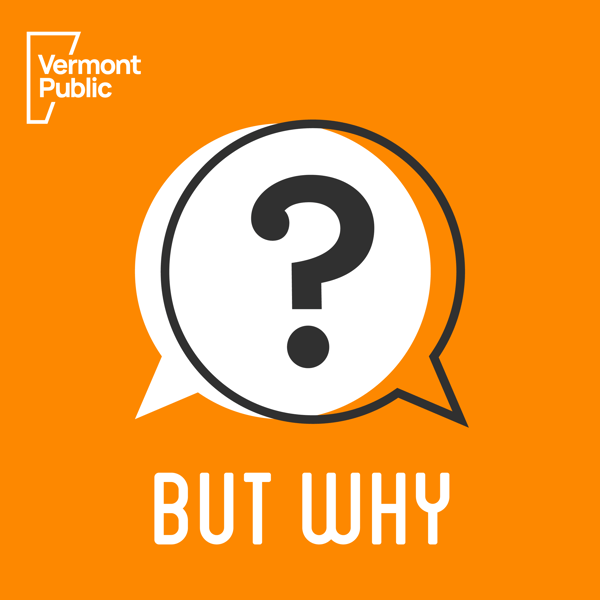Why do seasons change?
But Why: A Podcast for Curious Kids
Vermont Public
4.4 • 4.9K Ratings
🗓️ 17 December 2021
⏱️ 33 minutes
🧾️ Download transcript
Summary
Why do seasons change? Why does it get darker earlier in the winter and why is there more daylight in the summer? Why are some seasons warm and some are cold and icy? Why do some places not have seasonal changes at all? We’re learning about solstices, equinoxes and seasons in this episode of But Why. Our guide is John O’Meara, Chief Scientist at Hawaii’s Keck Observatory. And kids around the world tell us what they like best about their favorite season.
Download our learning guides: PDF | Google Slide | Transcript
The solstices are on December 21 and 22 and June 20 or 21, those are when the earth is leaning as far away from the sun or as close to the sun as it gets. Whether the solstice is your winter or summer solstice depends on whether you are in the northern or southern hemisphere. The two equinoxes - when both hemispheres are getting about the same amount of solar energy are on March 21 or 22 or September 22 or 23.
If you want to visualize the solstice, John O’Meara has an experiment. Find a ball and a flashlight. Have someone hold the flashlight; you hold the ball. Spin the ball around and around, the way the earth would rotate in a day. You can even draw a dot on the ball to mark where you are. Now lean the ball a little bit away from the light and keep spinning. Remember the earth is tilted on its axis (23.5 degrees to be exact!). Observe how the light falls differently on the dot. It forces the sunlight to be brighter on some spots and darker in others even during the day because of the way the light falls on the earth.
In some parts of the world there aren’t big seasonal changes. Those places are near the equator. The equator is a line around the middle of the earth, where the sphere is at its fattest or widest. While the poles get more or less light because of the tilt of the earth, the middle stays centered, so people near the equator have about the same length of daylight all year and don’t have as many seasonal shifts in light and temperature.
The amount of sunlight in any given location makes a big impact on how cold or hot it is. But there are other factors that determine the climate (long-term weather trends) where you live, too. Differences in the landscape, global wind systems, proximity (how close or far you are) from the ocean, and precipitation patterns also determine what the seasons will feel like where you live.
Transcript
Click on a timestamp to play from that location
| 0:00.0 | If you're on the hunt for the perfect holiday gift for the kids in your life this season, |
| 0:08.6 | don't forget, but why has books? |
| 0:11.0 | They're great for independent readers or for adults to read to younger kids. |
| 0:15.6 | So if you and your kids would like to know what animal can regenerate its limbs better |
| 0:20.6 | than almost any other animal in the world, or what jellyfish are actually made out of, |
| 0:26.2 | get your hands on Do Fish Breathe underwater. |
| 0:29.0 | Our book all about the ocean. |
| 0:31.2 | Maybe farm animals are more your kids' speed. |
| 0:33.5 | In that case, try our Lama's Ticklish. |
| 0:36.5 | You can find our books at your local bookstore or online, and you can learn more at butwhykids.org |
| 0:42.3 | on the Slash Books. |
| 1:08.7 | This is But Why, a podcast for curious kids from Vermont Public Radio. |
| 1:13.1 | I'm Jane Lentholm. |
| 1:14.9 | On this show, we take questions from curious kids just like you, maybe even you, and we find |
| 1:20.8 | answers. |
| 1:22.2 | As we publish this episode, we're nearing a day called the Solstice. |
| 1:26.7 | If you live in the Northern Hemisphere, like in the United States or Canada, Europe, |
| 1:31.1 | Russia, most of Asia, you're about to experience the shortest day of the year in terms of sunlight. |
| 1:38.5 | The Winter Solstice, usually on December 21 or 22, is when the North Pole is tilted |
| 1:44.6 | as far away from the sun as it gets, so you have the least amount of sunlight on that |
| 1:50.1 | day that you'll have at any point in the year. |
| 1:52.9 | Now, if you live in the Southern Hemisphere, though, in much of Africa and South America, |
... |
Please login to see the full transcript.
Disclaimer: The podcast and artwork embedded on this page are from Vermont Public, and are the property of its owner and not affiliated with or endorsed by Tapesearch.
Generated transcripts are the property of Vermont Public and are distributed freely under the Fair Use doctrine. Transcripts generated by Tapesearch are not guaranteed to be accurate.
Copyright © Tapesearch 2025.

